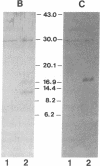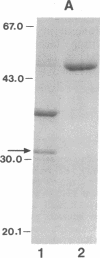Abstract
A monoclonal anti-idiotype antibody, NS7, previously shown to mimic the binding of the pterin cofactor of phenylalanine hydroxylase (phenylalanine 4-monooxygenase, EC 1.14.16.1) has been used to localize the cofactor binding site within the phenylalanine hydroxylase catalytic domain to a 27-amino-acid sequence that is highly conserved among the three aromatic amino acid hydroxylases. The binding of NS7 to a synthetic peptide corresponding to the phenylalanine hydroxylase sequence from residue 263 to residue 289 was blocked by the competitive inhibitor of phenylalanine hydroxylase enzyme activity, 7,8-dihydro-6,7-dimethylpterin. In addition this peptide competed with native phenylalanine hydroxylase for binding to 6,7-dimethyl-5,6,7,8-tetrahydropterin conjugated to a polyglutamate carrier. Application of this simple and direct approach to other enzymes is likely to greatly facilitate the identification of ligand binding sites on enzymes, which will significantly contribute to the understanding of enzyme structure-function relationships.
Full text
PDF
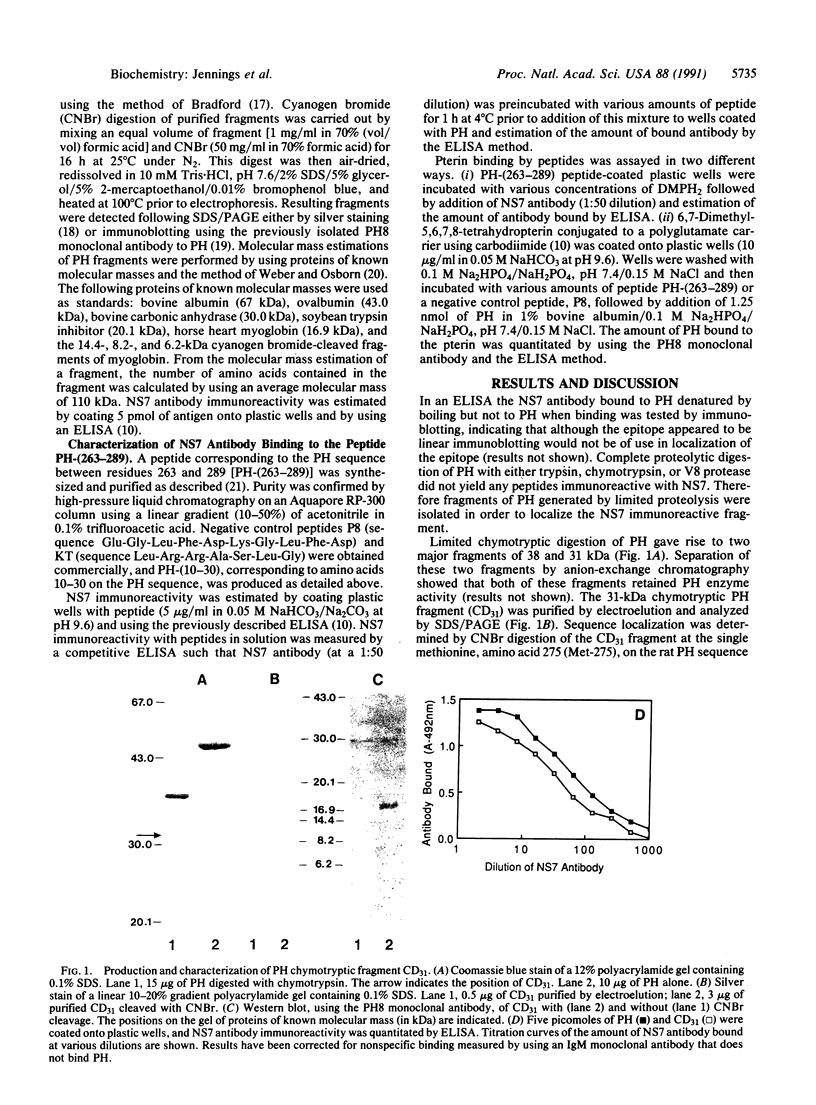

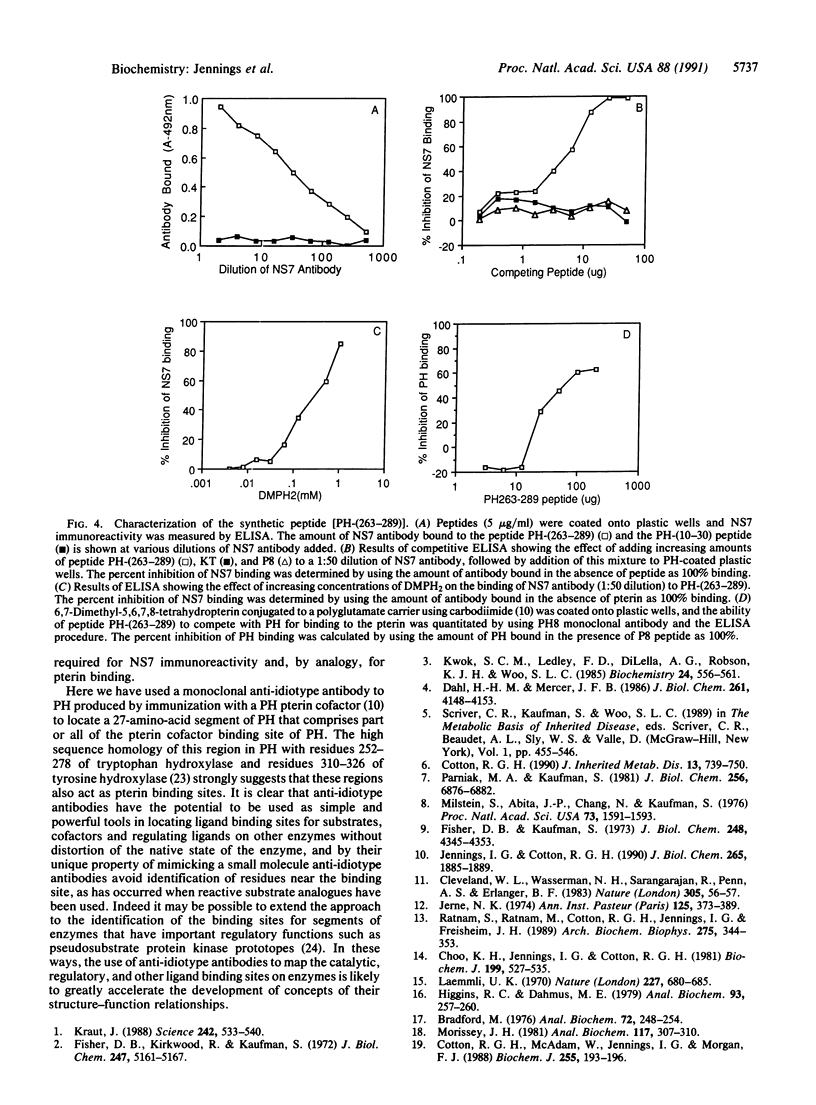
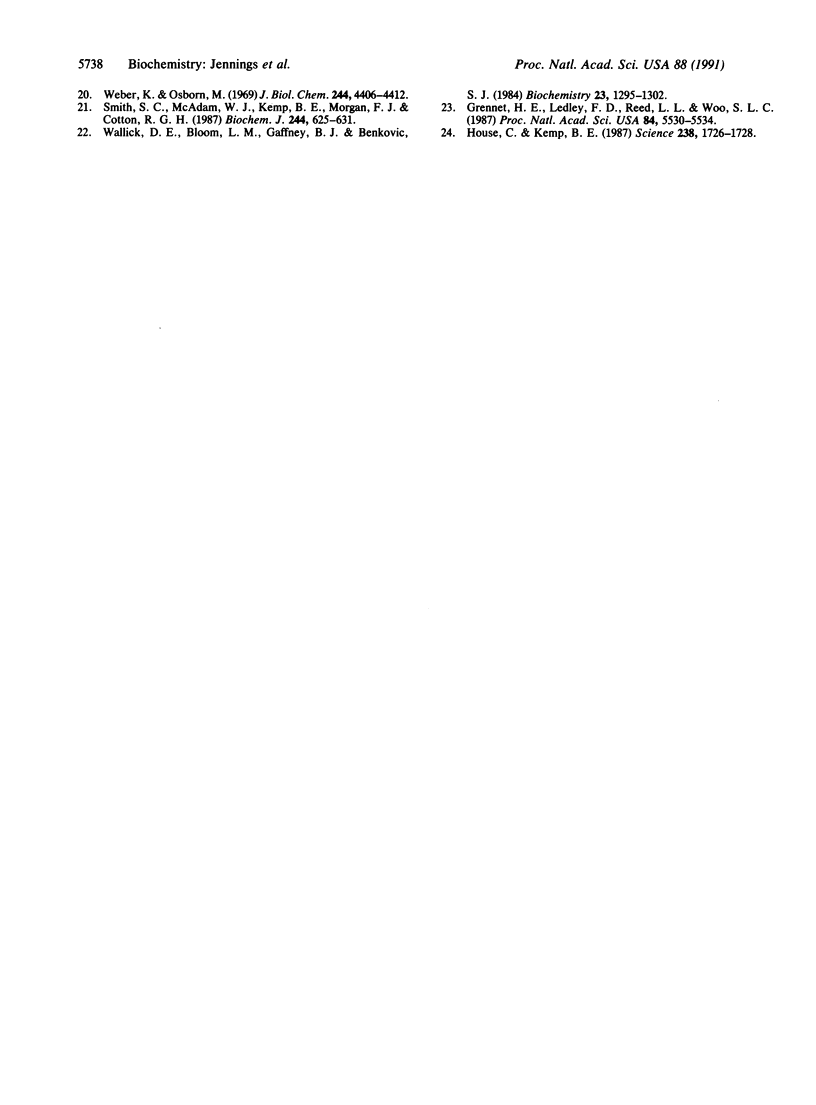
Images in this article
Selected References
These references are in PubMed. This may not be the complete list of references from this article.
- Bradford M. M. A rapid and sensitive method for the quantitation of microgram quantities of protein utilizing the principle of protein-dye binding. Anal Biochem. 1976 May 7;72:248–254. doi: 10.1006/abio.1976.9999. [DOI] [PubMed] [Google Scholar]
- Choo K. H., Jennings I. G., Cotton R. G. Comparative studies of four monoclonal antibodies to phenylalanine hydroxylase exhibiting different properties with respect to substrate-dependence, species-specificity and a range of effects on enzyme activity. Biochem J. 1981 Dec 1;199(3):527–535. doi: 10.1042/bj1990527. [DOI] [PMC free article] [PubMed] [Google Scholar]
- Cleveland W. L., Wassermann N. H., Sarangarajan R., Penn A. S., Erlanger B. F. Monoclonal antibodies to the acetylcholine receptor by a normally functioning auto-anti-idiotypic mechanism. Nature. 1983 Sep 1;305(5929):56–57. doi: 10.1038/305056a0. [DOI] [PubMed] [Google Scholar]
- Cotton R. G. Heterogeneity of phenylketonuria at the clinical, protein and DNA levels. J Inherit Metab Dis. 1990;13(5):739–750. doi: 10.1007/BF01799577. [DOI] [PubMed] [Google Scholar]
- Cotton R. G., McAdam W., Jennings I., Morgan F. J. A monoclonal antibody to aromatic amino acid hydroxylases. Identification of the epitope. Biochem J. 1988 Oct 1;255(1):193–196. doi: 10.1042/bj2550193. [DOI] [PMC free article] [PubMed] [Google Scholar]
- Dahl H. H., Mercer J. F. Isolation and sequence of a cDNA clone which contains the complete coding region of rat phenylalanine hydroxylase. Structural homology with tyrosine hydroxylase, glucocorticoid regulation, and use of alternate polyadenylation sites. J Biol Chem. 1986 Mar 25;261(9):4148–4153. [PubMed] [Google Scholar]
- Fisher D. B., Kaufman S. The stimulation of rat liver phenylalanine hydroxylase by lysolecithin and -chymotrypsin. J Biol Chem. 1973 Jun 25;248(12):4345–4353. [PubMed] [Google Scholar]
- Fisher D. B., Kirkwood R., Kaufman S. Rat liver phenylalanine hydroxylase, an iron enzyme. J Biol Chem. 1972 Aug 25;247(16):5161–5167. [PubMed] [Google Scholar]
- Grenett H. E., Ledley F. D., Reed L. L., Woo S. L. Full-length cDNA for rabbit tryptophan hydroxylase: functional domains and evolution of aromatic amino acid hydroxylases. Proc Natl Acad Sci U S A. 1987 Aug;84(16):5530–5534. doi: 10.1073/pnas.84.16.5530. [DOI] [PMC free article] [PubMed] [Google Scholar]
- Higgins R. C., Dahmus M. E. Rapid visualization of protein bands in preparative SDS-polyacrylamide gels. Anal Biochem. 1979 Mar;93(2):257–260. doi: 10.1016/s0003-2697(79)80148-7. [DOI] [PubMed] [Google Scholar]
- House C., Kemp B. E. Protein kinase C contains a pseudosubstrate prototope in its regulatory domain. Science. 1987 Dec 18;238(4834):1726–1728. doi: 10.1126/science.3686012. [DOI] [PubMed] [Google Scholar]
- Jennings I., Cotton R. Structural similarities among enzyme pterin binding sites as demonstrated by a monoclonal anti-idiotypic antibody. J Biol Chem. 1990 Feb 5;265(4):1885–1889. [PubMed] [Google Scholar]
- Kraut J. How do enzymes work? Science. 1988 Oct 28;242(4878):533–540. doi: 10.1126/science.3051385. [DOI] [PubMed] [Google Scholar]
- Kwok S. C., Ledley F. D., DiLella A. G., Robson K. J., Woo S. L. Nucleotide sequence of a full-length complementary DNA clone and amino acid sequence of human phenylalanine hydroxylase. Biochemistry. 1985 Jan 29;24(3):556–561. doi: 10.1021/bi00324a002. [DOI] [PubMed] [Google Scholar]
- Laemmli U. K. Cleavage of structural proteins during the assembly of the head of bacteriophage T4. Nature. 1970 Aug 15;227(5259):680–685. doi: 10.1038/227680a0. [DOI] [PubMed] [Google Scholar]
- Milstien S., Abita J. P., Chang N., Kaufman S. Hepatic phenylalanine 4-monooxygenase is a phosphoprotein. Proc Natl Acad Sci U S A. 1976 May;73(5):1591–1593. doi: 10.1073/pnas.73.5.1591. [DOI] [PMC free article] [PubMed] [Google Scholar]
- Morrissey J. H. Silver stain for proteins in polyacrylamide gels: a modified procedure with enhanced uniform sensitivity. Anal Biochem. 1981 Nov 1;117(2):307–310. doi: 10.1016/0003-2697(81)90783-1. [DOI] [PubMed] [Google Scholar]
- Parniak M. A., Kaufman S. Rat liver phenylalanine hydroxylase. Activation by sulfhydryl modification. J Biol Chem. 1981 Jul 10;256(13):6876–6882. [PubMed] [Google Scholar]
- Ratnam S., Ratnam M., Cotton R. G., Jennings I. G., Freisheim J. H. Anti-idiotypic antibodies elicited by pterin recognize active site epitopes in dihydrofolate reductases and dihydropteridine reductase. Arch Biochem Biophys. 1989 Dec;275(2):344–353. doi: 10.1016/0003-9861(89)90381-0. [DOI] [PubMed] [Google Scholar]
- Smith S. C., McAdam W. J., Kemp B. E., Morgan F. J., Cotton R. G. A monoclonal antibody to the phosphorylated form of phenylalanine hydroxylase. Definition of the phosphopeptide epitope. Biochem J. 1987 Jun 15;244(3):625–631. doi: 10.1042/bj2440625. [DOI] [PMC free article] [PubMed] [Google Scholar]
- Weber K., Osborn M. The reliability of molecular weight determinations by dodecyl sulfate-polyacrylamide gel electrophoresis. J Biol Chem. 1969 Aug 25;244(16):4406–4412. [PubMed] [Google Scholar]



